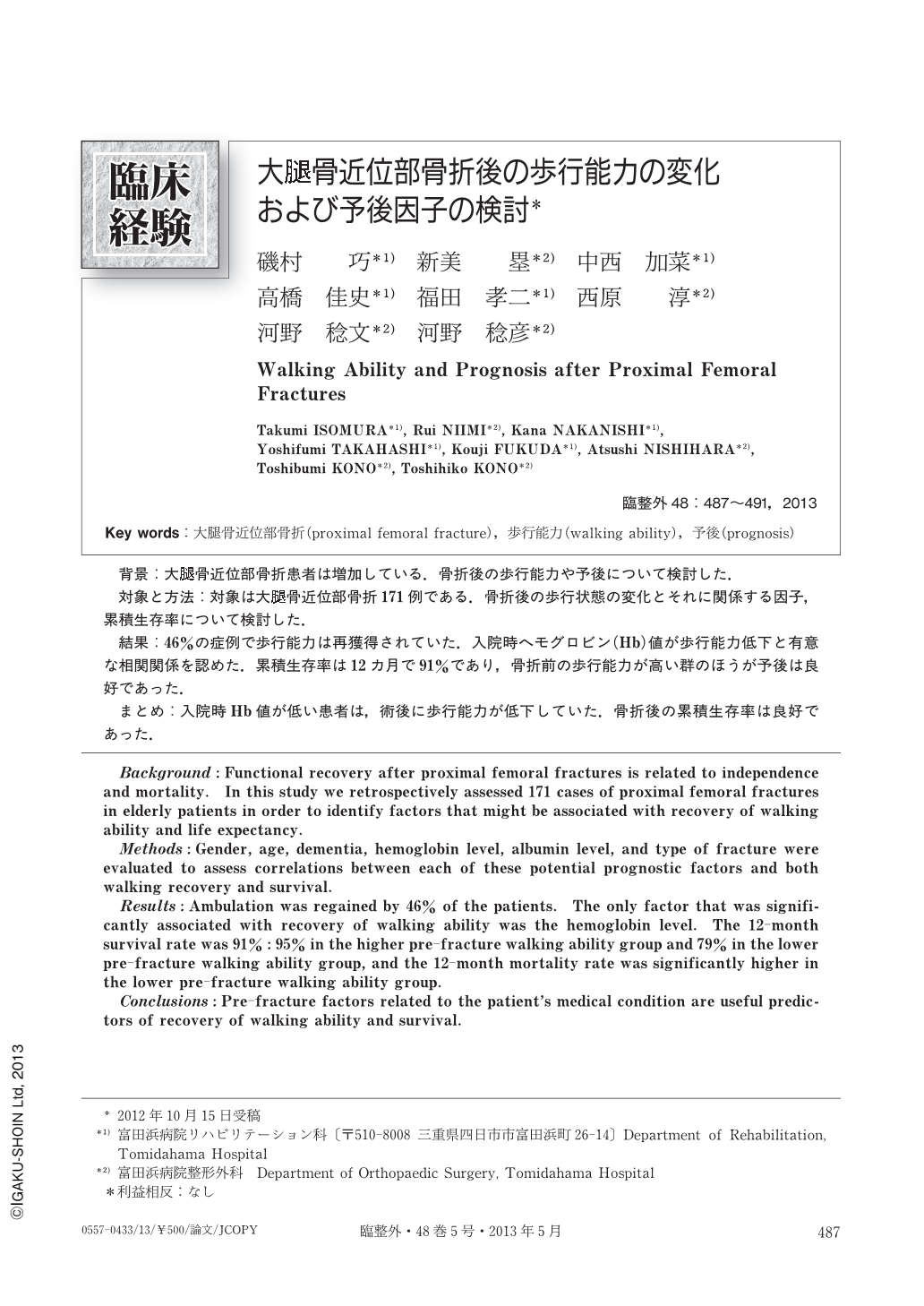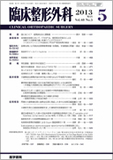Japanese
English
- 有料閲覧
- Abstract 文献概要
- 1ページ目 Look Inside
- 参考文献 Reference
背景:大腿骨近位部骨折患者は増加している.骨折後の歩行能力や予後について検討した.
対象と方法:対象は大腿骨近位部骨折171例である.骨折後の歩行状態の変化とそれに関係する因子,累積生存率について検討した.
結果:46%の症例で歩行能力は再獲得されていた.入院時ヘモグロビン(Hb)値が歩行能力低下と有意な相関関係を認めた.累積生存率は12カ月で91%であり,骨折前の歩行能力が高い群のほうが予後は良好であった.
まとめ:入院時Hb値が低い患者は,術後に歩行能力が低下していた.骨折後の累積生存率は良好であった.
Background:Functional recovery after proximal femoral fractures is related to independence and mortality. In this study we retrospectively assessed 171 cases of proximal femoral fractures in elderly patients in order to identify factors that might be associated with recovery of walking ability and life expectancy.
Methods:Gender, age, dementia, hemoglobin level, albumin level, and type of fracture were evaluated to assess correlations between each of these potential prognostic factors and both walking recovery and survival.
Results:Ambulation was regained by 46% of the patients. The only factor that was significantly associated with recovery of walking ability was the hemoglobin level. The 12-month survival rate was 91%:95% in the higher pre-fracture walking ability group and 79% in the lower pre-fracture walking ability group, and the 12-month mortality rate was significantly higher in the lower pre-fracture walking ability group.
Conclusions:Pre-fracture factors related to the patient's medical condition are useful predictors of recovery of walking ability and survival.

Copyright © 2013, Igaku-Shoin Ltd. All rights reserved.


